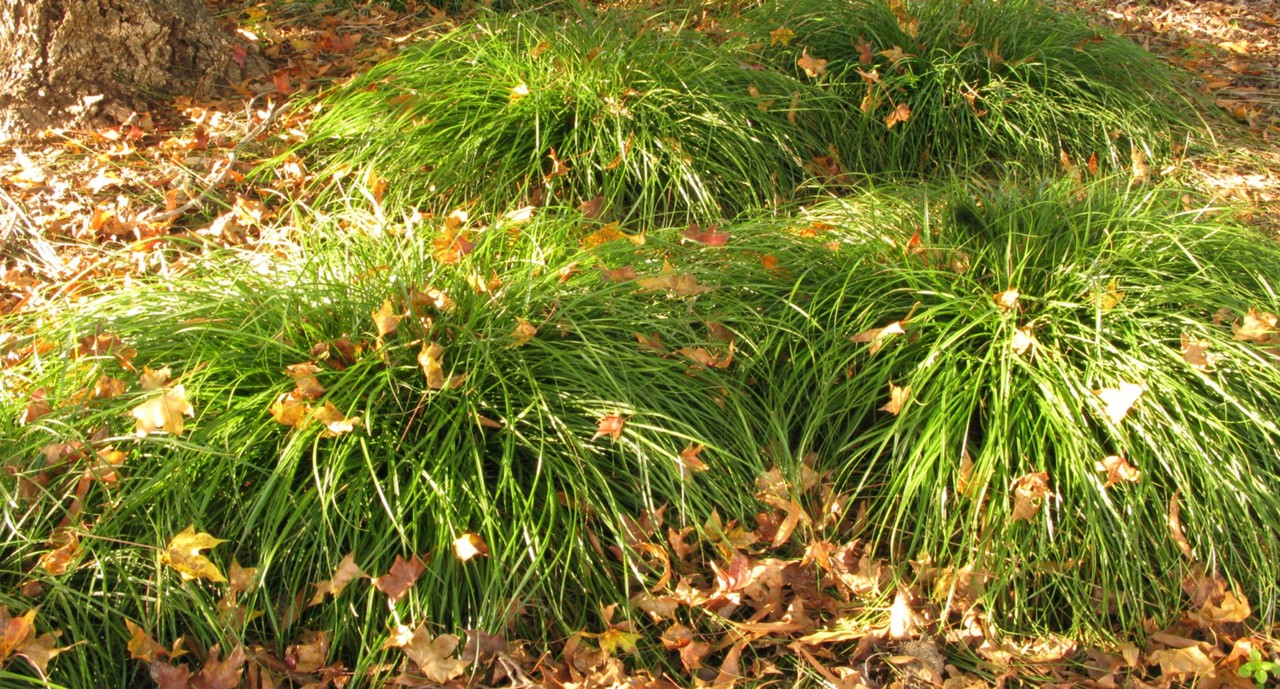
Carex divulsa: A Workhorse Sedge with Style
This is one of my favorite sedges and a must-have for modern landscapes. With fine, green foliage and an elegant habit, Carex divulsa is a workhorse plant with style.
Need a groundcover beneath mature trees?
Want a stylish but sturdy filler for layered plantings?
Looking for a lush, green alternative to traditional turfgrass?
This is your sedge.
Known as Grassland Sedge, Carex divulsa handles a range of conditions—from dry to moist and from part sun to part shade. Some sedges melt in the heat and humidity of our central North Carolina summers, but this Carex has sailed through with flying colors. It’s not fussy about soil type, either.
It functions perfectly as a backbone for large plantings, such as on slopes, in meadows, and wherever a groundcover is needed.
Intricate blooms emerge in early spring, adding texture and interest. This planting, pictured in early May, brightens up the landscape.
In the nursery trade, C. divulsa was mistaken for the native C. tumulicola (Berkeley Sedge), but is now believed to have been introduced from Eurasia and naturalized in parts of Canada and the Northeastern U.S. It envelops the landscape in a bright green sea of texture, with arching bunches spreading two feet and narrow foliage intermingling.
Grassland Sedge tolerates a wide range of conditions—heat and humidity, moist to boggy soils, clay or sandy soils—and can naturalize when happy.
The blooms of Carex divulsa appear in early spring, showing their delicate structure, and maturing to a toasty brown in summer.
Shown in late August, this stand of Grassland Sedge remains attractive even after having endured full sun for part of each day and dry conditions.
In early November, Carex divulsa continues to provide coverage and a beautiful green background. As a cool season grower, it gets a flush of growth as temperature drop in early Fall.
As leaves fall and the landscape goes dormant, Grassland Sedge keeps its deep green color. In milder climates, it will stay evergreen throughout the winter.
An added bonus with Grassland Sedge—once it’s established, deer and small mammals tend to avoid it.
I love this versatile sedge for its beauty and functionality. It’s not a glamour plant, but it is a building block for landscapes that are beautiful and low maintenance.
For more info go to Hoffman Nursery's Carex divulsa plant profile.






Stormwater Manager at Town of Kernersville
7yGreat article Shannon Currey!